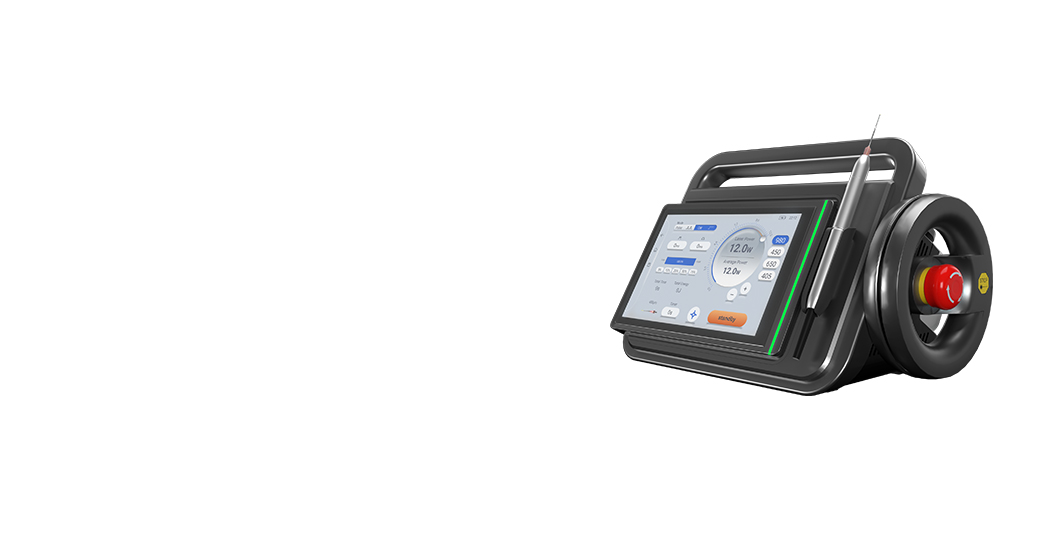Root canal disinfection
The principle of 980nm laser root canal disinfection is to use the photothermal effect and photochemical effect of laser. By inserting the laser fiber tip into the root canal and irradiating the root canal wall, it generates heat and kills bacteria and microorganisms in the root canal. At the same time, the laser can also combine with photosensitizers to produce active oxygen, which has a strong antibacterial effect.
Operation
-
Root canal preparation:
Mechanical preparation is performed using conventional root canal instruments (such as root canal files) to remove most of the infected pulp tissue and form an appropriate root canal morphology.
-
Laser disinfection:
Laser parameter setting: According to the treatment needs, adjust the power and frequency of the 980nm semiconductor laser. Usually low power (about 0.5-2 watts) and continuous or pulse mode are used.
Laser irradiation: Insert the laser fiber or probe into the root canal and move slowly along the root canal wall to ensure that the laser energy is evenly distributed throughout the root canal system. The laser irradiation time is usually 10-30 seconds, and each root canal can be repeated multiple times.
-
Irrigation and final treatment:
Irrigate with saline or other appropriate irrigating fluid to remove the pyrolysis products and residual debris in the root canal.
Perform root canal filling and sealing, and fill the root canal with biocompatible materials (such as gutta-percha) to prevent bacteria from re-entering the root canal system.
Advantage
-
Highly effective sterilization:
Laser can penetrate deep into the root canal to kill bacteria and microorganisms, including drug-resistant bacteria that are difficult to eliminate.
-
Protect surrounding tissues:
The laser can act precisely within the root canal, reducing damage to surrounding tissues.
-
No chemical residue:
Laser disinfection does not require chemicals, avoiding the impact of chemical residues on health.
-
Rapid Healing:
After laser disinfection, patients generally recover faster and experience less post-operative pain and discomfort.
-
Repeatability:
Laser disinfection can be repeated as many times as needed without causing bacterial resistance to the drug.
-
Minimally invasive treatment:
Laser disinfection is a non-invasive treatment method that does not require cutting the gums and has a shorter recovery time.
Matters needing attention
-
Professional operation:
This treatment requires the doctor to have received professional training and have rich clinical experience to ensure safe and effective operation.
-
Appropriate patient selection:
Not all patients are suitable for laser treatment. The doctor should evaluate the specific situation and choose the appropriate treatment plan.
-
Adjust appropriate parameters:
The laser parameters should be adjusted according to the size, shape, and degree of infection of the root canal to ensure thorough disinfection.
-
Protect surrounding tissues:
During laser treatment, it is necessary to pay attention to protecting the surrounding oral tissues to avoid unnecessary damage.
-
Postoperative care:
Patients need to follow the doctor's instructions for proper postoperative care to promote wound healing.
-
Regular follow-up:
Patients should have regular follow-up visits and examinations to ensure the treatment effect and oral health.



